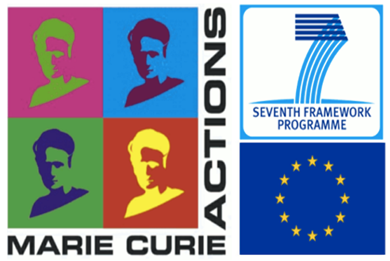

Out of the six known quarks (up, down, charm, strange, top, and bottom), we are here in particular interested in the physics involving bottom or charm quarks. Hence our focus is on B- and D-physics which describes the physics of B- and D-mesons, a quark-antiquark pair in which one constituent is either a heavy bottom or charm (anti)quark, respectively. Due to their large mass, a b-quark is about 1000 times heavier than a light d-quark, B- and D-mesons show a rich phenomenological structure with many processes to investigate but are also numerically challenging because yet another scale needs to be accommodated in the lattice QCD simulations. On the one hand we investigate how to improve using domain wall fermions for simulating charm and bottom quarks; on the other hand we use our set-up with domain wall light and charm quarks and relativistic bottom quarks to determine nonperturbative contributions of the strong force to processes of interest to phenomenology and experiment. Currently our particular focus is on semi-leptonic decays with special emphasis on b → c and b → s, charged and neutral flavor changing currents. Determining the nonperturbative form factors for such process allows to extract CKM matrix elements or shed light on the recently reported signs of lepton flavor universality violations.
The project started with the USQCD allocation period 2009/2010 utilizing the 2+1 dynamical flavor domain-wall Iwasaki gauge field configurations generated by the RBC- and UKQCD collaboration with lattice spacings of a ≈ 0.086 fm and 0.11 fm. We completed generating all needed domain-wall light quark propagators on these ensembles and those are immediately available for non-competing projects. A frame work for computing matching and O(a) improvement coefficients is in place. We have published results for the nonpeturbative tuning of the RHQ parameters (PRD86 (2012) 116003), B-meson decay constants (PRD91 (2015) 054502), and semin-leptonic form factors for B → π l ν and Bs → K l ν (PRD91 (2015) 074510), as well as the B*B π coupling (PRD93 (2016) 014510) which completed "Phase 1" of our project.
With the allocation period 2013/14 we are started to extend our B-physics project to include newer 2+1 dynamical flavor Möbius-domain-wall ensembles featuring physical pions and a third, finer lattice spacing of a ≈ 0.07 fm. This will help to reduce uncertainties from the chiral- and continuum extrapolation, currently identified as our largest uncertainties. Moreover, we include D-mesons in our investigations which we simulate by using heavy domain wall fermions for charm quarks. This extension is named "Phase 2".
A particular focus of Phase 2 is the exploration of heavy domain wall fermions for simulations of charm and bottom quarks. Following the pioneering work (JHEP 1604 (2016) 037) to use domain-wall fermions for simulations of charm quarks and the application to the calculation of D-meson decay constants (JHEP 1712 (2017) 008), we are exploring the application to semi-leptonic decays (PoS LATTICE2016 (2016) 296) and at the same time try to improve the method and extend the range of quark masses which can be simulated (arXiv:1712.00862). Phenomenologically we currently focus on the investigation of lepton flavor universality violations observed by the LHCb, BaBar, and Belle experiment but also investigated by Atlas and CMS.
Further details are available for Phase 1 (USQCD allocation 2009/2010 - 2012/2013) and Phase 2 (since USQCD allocation 2013/2014) as well as in our Publications and Presentations.

